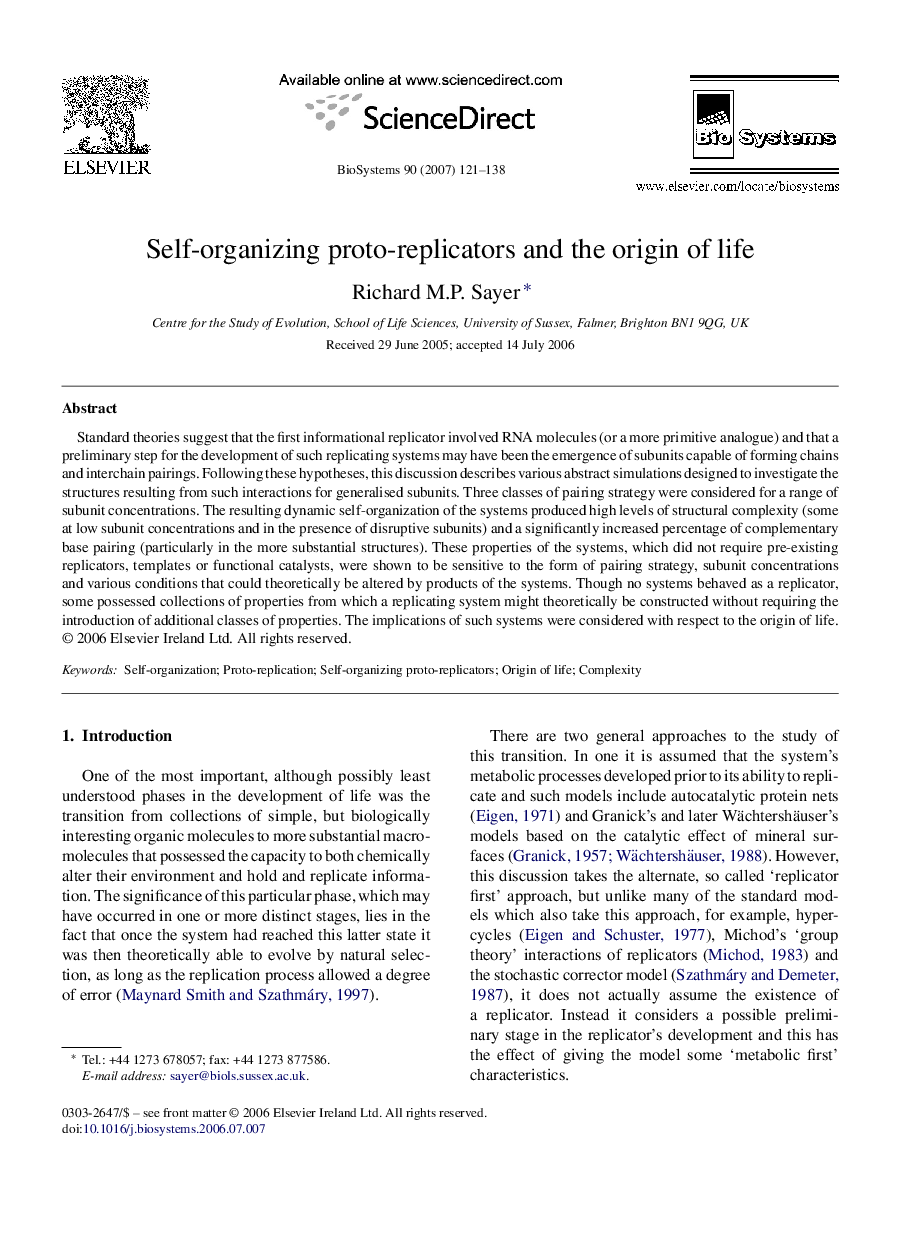| کد مقاله | کد نشریه | سال انتشار | مقاله انگلیسی | نسخه تمام متن |
|---|---|---|---|---|
| 2076825 | 1079466 | 2007 | 18 صفحه PDF | دانلود رایگان |

Standard theories suggest that the first informational replicator involved RNA molecules (or a more primitive analogue) and that a preliminary step for the development of such replicating systems may have been the emergence of subunits capable of forming chains and interchain pairings. Following these hypotheses, this discussion describes various abstract simulations designed to investigate the structures resulting from such interactions for generalised subunits. Three classes of pairing strategy were considered for a range of subunit concentrations. The resulting dynamic self-organization of the systems produced high levels of structural complexity (some at low subunit concentrations and in the presence of disruptive subunits) and a significantly increased percentage of complementary base pairing (particularly in the more substantial structures). These properties of the systems, which did not require pre-existing replicators, templates or functional catalysts, were shown to be sensitive to the form of pairing strategy, subunit concentrations and various conditions that could theoretically be altered by products of the systems. Though no systems behaved as a replicator, some possessed collections of properties from which a replicating system might theoretically be constructed without requiring the introduction of additional classes of properties. The implications of such systems were considered with respect to the origin of life.
Journal: Biosystems - Volume 90, Issue 1, July–August 2007, Pages 121–138